Understanding technical indicators is crucial for successful Forex trading.
These mathematical models visually represent market direction, price movements, and potential entry/exit points, making them essential in decision-making.
However, the vast array of indicators available can be overwhelming, especially for beginners.
This article aims to demystify technical indicators, providing a clear and comprehensive guide to help you make informed decisions and enhance your trading strategies.
Unlock the potential of powerful trading tools for a competitive edge.
What are Technical Indicators? How Can They Help?
Technical indicators act as a bridge between raw market data and trading insights in the Forex market.
These tools enable individuals to analyze and predict market movements systematically and objectively based on historical data.
But what exactly are technical indicators? In essence, they are mathematical calculations that interpret various aspects of trading activity to produce specific output values.
These outputs give you a visual guide, and understanding technical indicators helps identify potential market direction, reversals, and Momentum.

There are four primary types of technical indicators: Trend indicators, Momentum indicators, Volatility indicators, and Volume indicators.
In this article, I will ignore Volume indicators since they don’t apply to Forex trading.
The Forex market is decentralized, making volume measurement impossible since there aren’t traditional exchanges.
Each type offers distinct insights into market behavior, aiding you in crafting strategies tailored to unique trading objectives and risk tolerance.
What is a Trend Indicator and What is it Saying About Prices?
In Forex trading, understanding and leveraging Trend indicators is crucial for identifying market direction.
Trend indicators, by their very nature, assist in smoothing out price fluctuations and provide a clearer picture of the market direction over specific periods.
One of the most commonly used Trend indicators is the Moving Average, which calculates the average price over a defined number of periods, helping you spot the prevailing Trend.
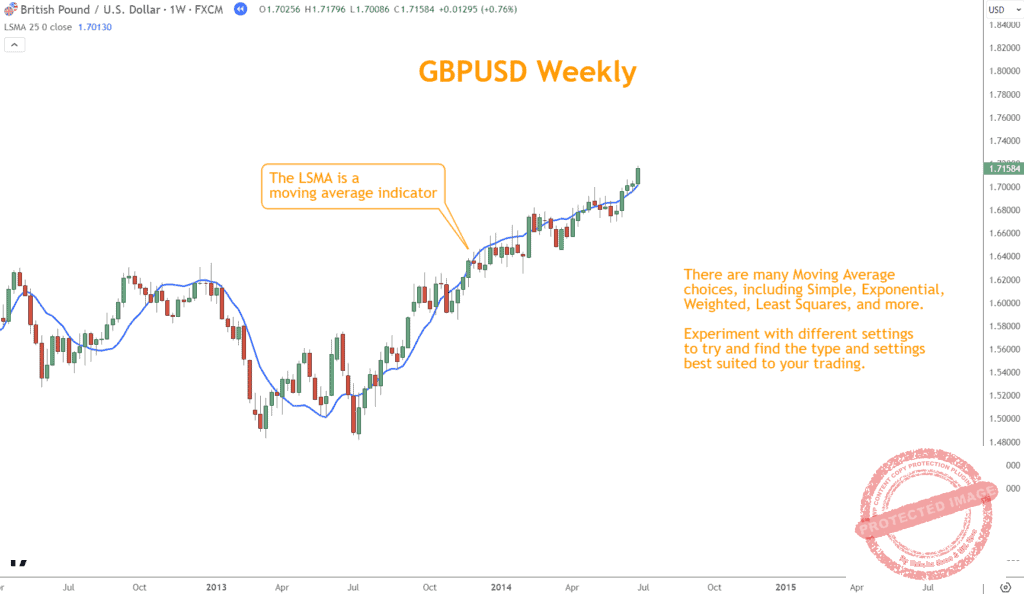
One essential tool for traders is the Moving Average Convergence Divergence (MACD) indicator. It not only indicates trend direction but also provides insights into the Momentum behind price movements.
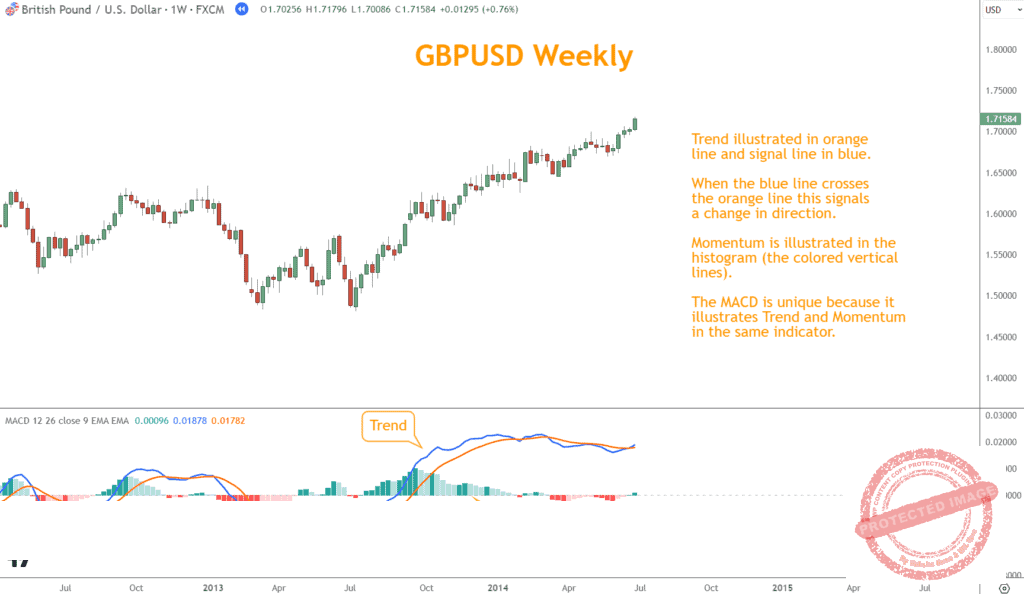
By mastering these Trend indicators, you can equip yourself with the ability to discern market movements, enhance trading strategies, and increase your chances of executing successful trades.
Are Momentum Indicators Important and What are They?
Momentum indicators are essential in Forex trading to grasp the strength and speed of price movements in a Forex pair.
These indicators provide traders with insights into whether a current currency pair is likely to continue or reverse, helping them to make more informed decisions.
The Relative Strength Index (RSI) is a primary tool in this category, offering a view of overbought or oversold conditions, which can signal potential reversal points.
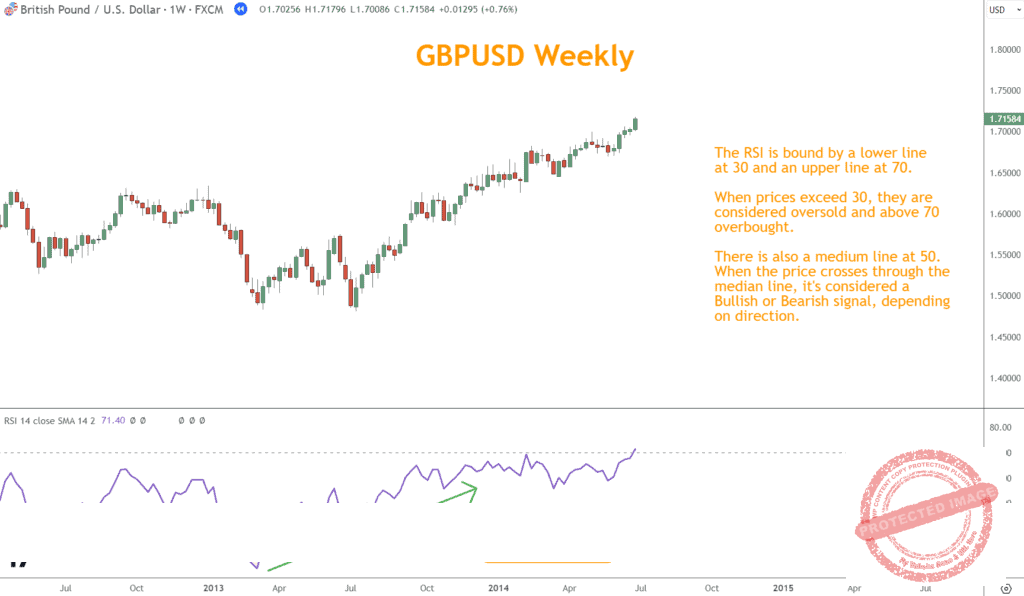
Similarly, the Stochastic Oscillator helps traders identify Overbought and Oversold conditions but focuses on closing prices relating to the recent price range.
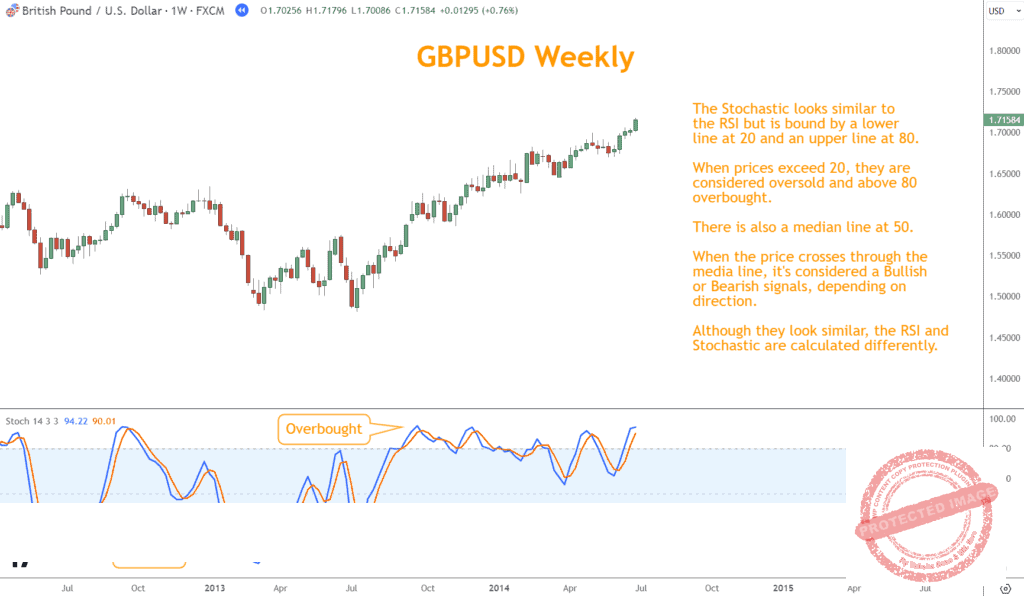
By integrating these Momentum indicators into their trading strategies, traders can gain a more nuanced understanding of market movements, allowing for timely entries and exits.
What are Volatility Indicators and What do They say About Price Action?
In Forex trading, understanding market volatility is as crucial as recognizing trends and momentum, making volatility indicators indispensable.
Traders rely on market indicators to make informed decisions during turbulent times.
Bollinger Bands, a widely-used volatility indicator, consist of an upper, middle, and lower band, with price movements between these bands indicating market volatility and potential price breakouts.
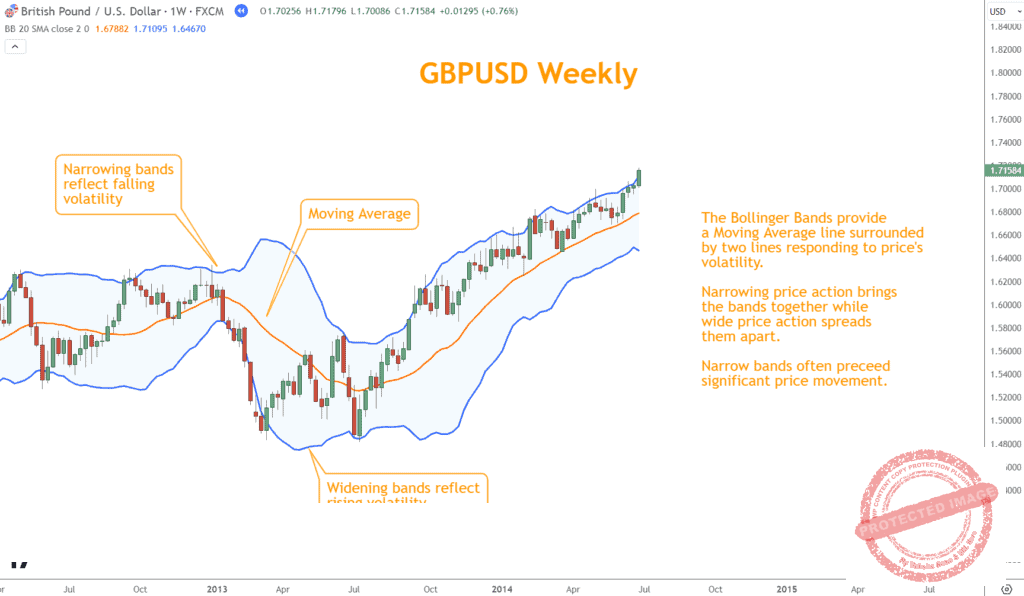
Another valuable tool in this category is the Average True Range (ATR), which provides insight into the degree of price volatility by measuring the range between consecutive closing prices.
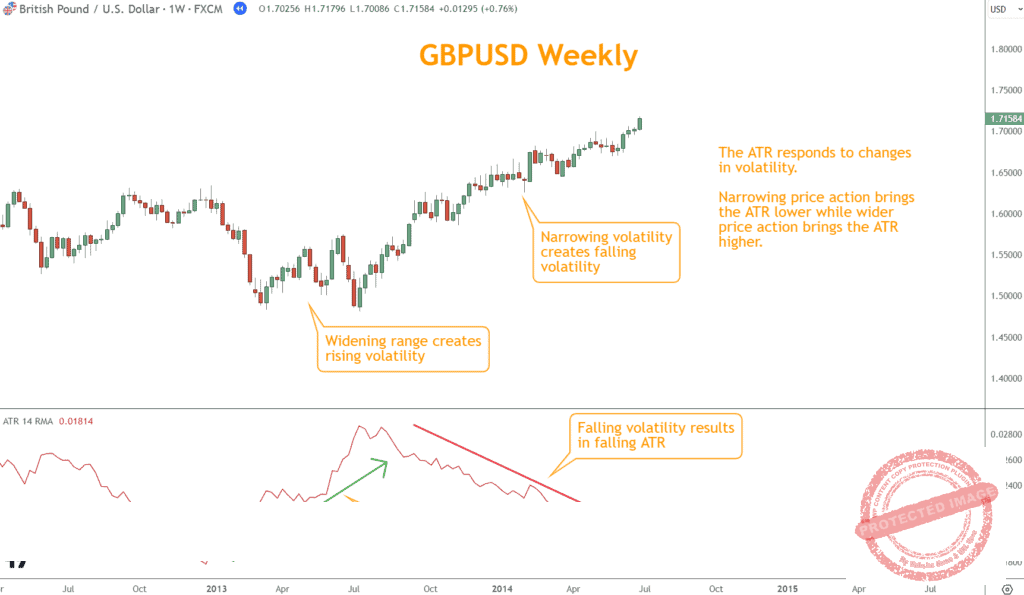
Using volatility indicators strategically, you can anticipate market movements and adjust your strategies accordingly.
How Combining Indicators and Other Tools Helps Win
In Forex trading, combining technical indicators with chart patterns, Japanese candlesticks, and support and resistance techniques creates a robust toolkit.
Japanese candlesticks visually represent price movements, offering clues about market sentiment and potential reversals.
Chart patterns, such as Triangles or Head and Shoulders patterns, help you identify and anticipate future price directions.
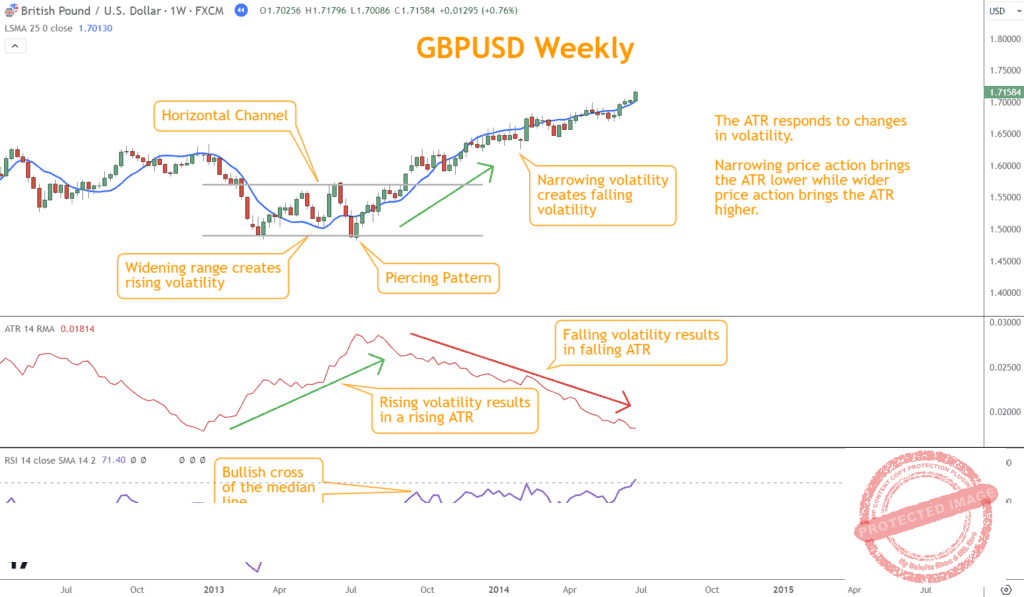
Support and Resistance techniques enable you to spot levels where the price might change direction.
You can better understand the market, validate predictions, and make confident trading decisions by understanding technical indicators and integrating with these tools.
This multi-faceted approach of understanding technical indicators and combining them with other techniques enhances the accuracy of market analysis, leading to improved trading outcomes.
Conclusion
In conclusion, mastering the art of Forex trading requires a deep understanding and strategic application of various analytical tools.
Technical indicators, when used in harmony with Japanese Candlesticks, Chart Patterns, and Support and Resistance techniques, provide you with a robust framework for navigating the market.
This comprehensive approach allows for a more nuanced analysis, leading to informed and strategic trading decisions.
By embracing this holistic strategy, you can enhance your ability to identify profitable opportunities, manage risks effectively, and ultimately achieve your trading objectives.
This article is a stepping stone, guiding traders towards a more confident and proficient trading experience.
What’s the Next Step?
Select a broker and a strategy using what you learned in this article.
In addition, look for opportunities to familiarize yourself with trading techniques and fundamental analysis.
If you need help developing an analysis process, you can use our Six Basics of Chart Analysis. If you’re unfamiliar with the Six Basics, you can learn them here for free.
The “Six Basics” will give you a strong foundation in chart analysis, which you can incorporate with what you’ve learned about these crosses.
In addition, when you get the “Six Basics,” you’ll also get Forex Forecast delivered to your inbox every Sunday.
Forex Forecast includes:
- Trade Ideas and Analysis
- I will show you the trade opportunities I’m watching using the Six Basics of Chart Analysis and Advanced Strategies.
- Case Studies from Around the Web
- Watch how applying the Six Basics worked on some of the best, most profitable trades.
- Trading Education Guides and Videos
- Want to learn most Six Basics techniques and advanced strategies?
- I produce Videos and Guides to help you learn and build a better trading practice.
- Links to New Articles
- I publish new articles on topics traders will want to know about every week, and you can find out when they post.
- Positionforex.com News
- Did something change at positionforex.com? Learn about it here first!
- Links to upcoming webinars
- Attend free webinars to improve your trading.
- And Much More
- Tools, Membership-only Videos, and more will be released in the Forex Forecast.
The best part – it’s completely free.

Frequently Asked Questions
What are Technical Indicators, and why are they Important in Forex Trading?
Technical indicators are mathematical calculations based on historical prices, helping you identify certain market conditions and make trading decisions.
They are essential in Forex trading as they provide objective data and signals, helping to remove emotional bias from trading.
How Many Types of Technical Indicators are There?
There are primarily four types of technical indicators: Trend indicators, Momentum indicators, Volatility indicators, and Volume indicators. Each type serves a different purpose and provides various insights into market behavior.
In Forex trading, Volume indicators aren’t available since currency trading is distributed and not on an exchange like stocks or futures.
Can I Rely Solely on Technical Indicators for Trading?
While technical indicators are valuable tools, relying solely on them is not advisable.
Traders should consider fundamental analysis, economic indicators, and market news to make well-informed trading decisions.
How do I Choose the Right Technical Indicators for my Trading Strategy?
The choice of a technical indicator depends on your trading style, the time frame you are trading on, and your specific trading goals.
It’s essential to understand how different indicators work and to practice using them on a demo account before applying them in live trading.
Are Technical Indicators Foolproof?
No, technical indicators are not foolproof. They provide signals based on past market data, and there are no guarantees that these patterns will repeat.
It is important to use risk management strategies and be prepared for trades not going as predicted.

